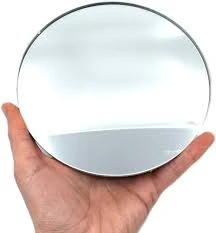

Understanding Low-E Glass Enhancing Energy Efficiency in Modern Architecture
In today's world, energy efficiency is a pressing concern, especially in the context of building design and construction. One of the innovations that have transformed the way we think about windows and glazing systems is Low-E (Low Emissivity) glass. This advanced glazing technology plays a crucial role in optimizing energy use, improving indoor comfort, and contributing to sustainable building practices.
So, what exactly is Low-E glass? Low-E glass is a type of glass that has been treated with a special coating that reduces the amount of infrared and ultraviolet light that passes through it without compromising the amount of visible light transmitted. The key characteristic of Low-E glass is its ability to minimize the amount of heat that enters or escapes a building. This is achieved through the application of a microscopically thin layer of metal oxide on the glass surface, which reflects heat radiation while allowing natural light to enter.
Moreover, Low-E glass can significantly enhance the comfort of indoor environments. Standard windows can create hotspots and drafts, making it uncomfortable for individuals inside. However, the insulating properties of Low-E glass create a more stable temperature throughout the space. This is particularly beneficial for homes and offices situated in regions with extreme weather conditions, where temperature fluctuations can be dramatic. With Low-E glass, occupants can enjoy a more pleasant living and working environment regardless of the season.

Low-E glass is available in different types, each designed to meet specific architectural requirements and performance expectations. There are two main categories of Low-E coatings 'hard coat' and 'soft coat.' Hard coat Low-E glass is more durable and suited for outdoor exposure, while soft coat options offer better thermal performance and are typically used in climates with milder weather conditions. Building designers can select the appropriate type of Low-E glass based on local climate conditions, the orientation of the building, and specific energy efficiency goals.
In addition to residential applications, Low-E glass is widely used in commercial buildings, where large areas of glazing can significantly impact energy performance. Office buildings, retail spaces, and schools benefit from the thermal insulation and UV protection that Low-E glass provides. Furthermore, with increasing emphasis on green building certifications like LEED (Leadership in Energy and Environmental Design), incorporating Low-E glass into architectural designs can qualify buildings for energy credits, making it more appealing to developers and investors.
Another noteworthy aspect of Low-E glass is its ability to protect the interior contents of a building. The UV rays that penetrate ordinary glass can fade and damage furnishings, artwork, and flooring over time. The application of Low-E glass mitigates this risk by blocking up to 99% of UV rays, thus preserving the aesthetic and structural integrity of interior spaces.
As the demand for sustainable and energy-efficient building solutions continues to rise, Low-E glass remains at the forefront of modern architectural design. Its combination of energy savings, comfort, and aesthetic appeal makes it a valuable choice for architects, builders, and homeowners. In conclusion, Low-E glass is not just a functional element of a building; it represents a significant step toward a more sustainable future in construction, one that prioritizes efficiency, comfort, and environmental responsibility.